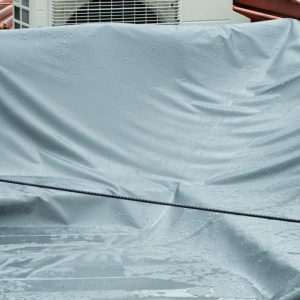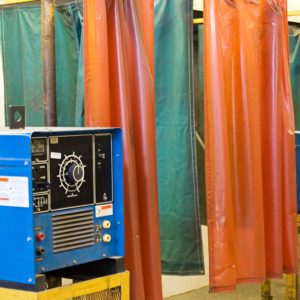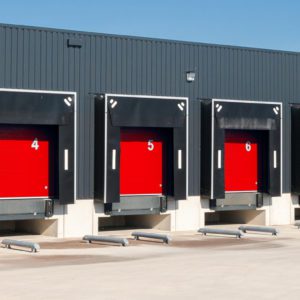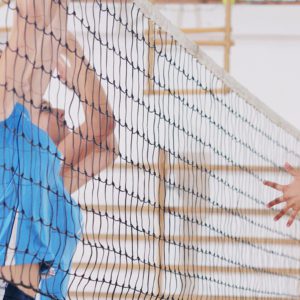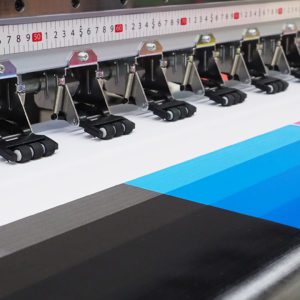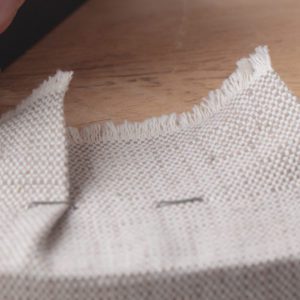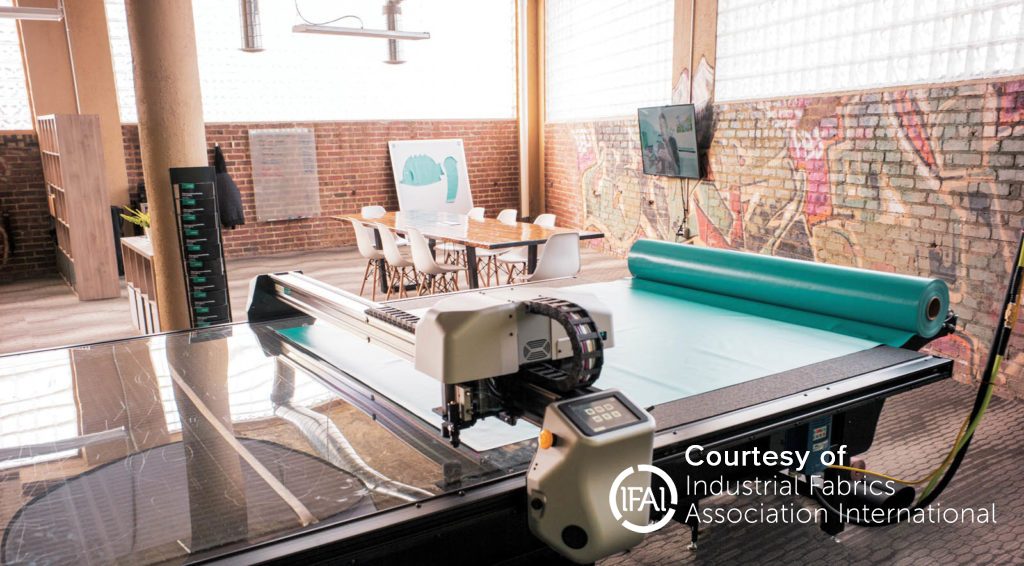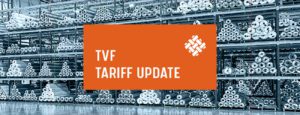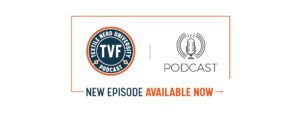Courtesy of Specialty Fabrics Review
California was the first U.S. state to issue a statewide stay-at-home order because of the spreading pandemic, and with that decision, Jonathan Palmer, CEO of Grass Valley, Calif.-based Autometrix Inc., became one of many business leaders navigating a company through uncharted waters.
“We had several customers who were waiting for us to deliver machines and they were in essential business lines—emergency medical tents, etc.—so we worked to stay open and continue to do what we do,” recalls Palmer, whose company designs and manufactures cutting solutions for the textile and composite industries, along with developing patterning software for these machines. “But for at least a month I would joke that I had never been so busy not making money.”
Then, just as the company was prepping for a significant slowdown, business unexpectedly picked up, becoming “very strong” for the remainder of 2020, he says.
One of the first moves Palmer made when COVID-19 hit was letting customers know the business was still open. Then, as many IFAI members pivoted to making personal protective equipment (PPE), Autometrix started collecting patterns from companies willing to share, distributing these to other companies and coming up with and sharing its own. As interest in new equipment bounced back, the company delved into virtual demos—“A learning curve for everyone,” Palmer says—enabling Autometrix to reach potential customers worldwide and keep sales going.
Palmer’s company has fared relatively well, but his experience is hardly universal. Some segments of the specialty fabrics industry have been damaged by the pandemic more than others, and much is still uncertain. What has become obvious is that flexibility and strategic thinking are key attributes of companies that are successfully finding a path through and beyond the pandemic.
Survival strategies
For event tent manufacturer Aztec Tents of Torrance, Calif., restrictions on public gatherings led to “massive amounts of order cancellations” from customers, according to Aztec president Alex Kouzmanoff.
In response, the company began building some “tangential” PPE products (those designed for more temporary applications) that could be rented by its customer base. It also began investigating previously unserved markets.
“We came out with several partition products designed for more retail-type applications. This type of transaction was harder for us to pin down, since we didn’t know this customer the way we know our typical event rental customer,” says Kouzmanoff, adding that the company sold to the retail market through web-based platforms.
For many companies, maintaining employee safety while staying open became a primary concern, requiring businesses to reorganize. Cooley Group, a Pawtucket, R.I., developer and manufacturer of high-performance polymeric solutions, remained “fully operational” from the start, implementing social distancing practices and strict mask wearing, says Daniel Dwight, president and CEO. Employees who could work from home separated into two teams, alternating days in the office. And the company accelerated its adoption of Microsoft Teams—an effort begun before the pandemic to increase videoconferencing capabilities and improve collaboration.
Dwight says the company’s “highly diversified” product range mitigated the pandemic’s impact. Hits delivered to certain markets, such as print media and shades, were offset by growth in others, like health-care and fuel containment.
Carmel, Ind.-based TVF, a fabric supplier for an array of industries, also shifted much of its office staff to work-from-home, says Chris Fredericks, CEO, while the company’s fulfillment centers remained open with increased safety protocols. Like Cooley, TVF serves a varied customer base. Although some markets were “severely impacted,” others thrived by moving to produce PPE and related items, making it important for TVF to continue operating. Although the transition to remote work was initially “clunky,” says Fredericks, it did have some upsides. “In some cases we found ourselves having more facetime with customers than in the past, which was a positive surprise,” he says. “The same can be said internally. We really made an effort to [create] opportunities for our team to virtually connect and collaborate. It’s certainly not the same but in some cases we saw our team connect and collaborate in a more meaningful way virtually than when we were all in the office.”
Business as usual?
Some events change everything. At IFAI Virtual Expo 2020 in November, one session speaker remarked that 9-11 forever changed how our society looks at security, the 2008 economic collapse forever changed how we look at finances, and the COVID-19 pandemic will likely forever change how we look at hygiene. It will also likely affect the way companies run their businesses.
“One aspect I see that is sure to impact our future business is our ability to pivot and adjust as the world around us changes,” Kouzmanoff says. “It was this one ability that allowed us to be nimble and adjust.”
The pandemic changed where many employees work and how businesses communicate internally and with customers, vendors and industry partners. Many predicted that these changes will be permanent.
“The combination of the work-from-home program and the extensive use of videoconferencing in our day-to-day communication has led to increased productivity without deteriorating Cooley’s collaborative culture,” Dwight says. “The current plan is to make this program permanent and more productive.”
Fredericks describes TVF’s success at working remotely as “a pleasant surprise and a great benefit to many.”
“It’s something we’ll definitely consider continuing even after business as usual returns,” he adds. “I expect others to cut down significantly on business travel as well now that everyone is comfortable with video calls.”
But not everyone at a manufacturing company can work from home, Palmer notes. “I do believe that some of our customers have an increased awareness of the importance of equipment and processes and how these can protect them from workforce disruptions,” he says.
Cautious optimism
Given the damage the pandemic has wrought, it would seem reasonable to hold a somewhat gloomy outlook about the economy in general and some segments of the industrial fabrics industry in particular, but instead, some are cautiously upbeat. Palmer confesses to feeling as if “the other shoe needs to drop” when it comes to the world economy, but he’s not hearing anything worrisome from the industry. There’s a lot of interest in equipment—a sign of long-term investing, Palmer says—and in software solutions as the virus has revealed the “fragility of a workforce depending entirely on people.”
Fredericks is also optimistic about the future for his customers and their markets. “We’ve started to see the normal course of business resume and at the same time a lot of folks have found additional revenue streams, much of which could continue once things get back to normal,” he says, adding that conversations around supply chain reliability and reducing the risk of disruptions to this are ongoing.
Still, Fredericks believes it will take time before confidence returns to industries built on the ability of people to gather. Even businesses that have remained in good shape throughout the crisis should approach long-term planning more cautiously, considering not just best-case scenarios but also the worst, he advises.
How quickly the event rental industry could bounce back to pre-pandemic revenues is still murky, says Kouzmanoff, forecasting that this lack of clarity will persist into spring. He believes COVID has permanently altered the business landscape.
“It has reinvented the discussion of ‘what could happen to my business’ and moving forward, will forever impact decisions of businesses,” Kouzmanoff says. “The economy, business and society will recover, and even industries that have been hit the hardest will return.
“This will take time and I’m sure our industry friends are preparing for a leaner road to recovery and post-pandemic success by driving down their labor costs,” he continues. “Automation, mechanization and elimination of labor and wasteful revenue streams will make businesses operationally strong and better positioned to scale up and down in the future.”
Pamela Mills-Senn is a Long Beach, Calif.-based freelance writer.




